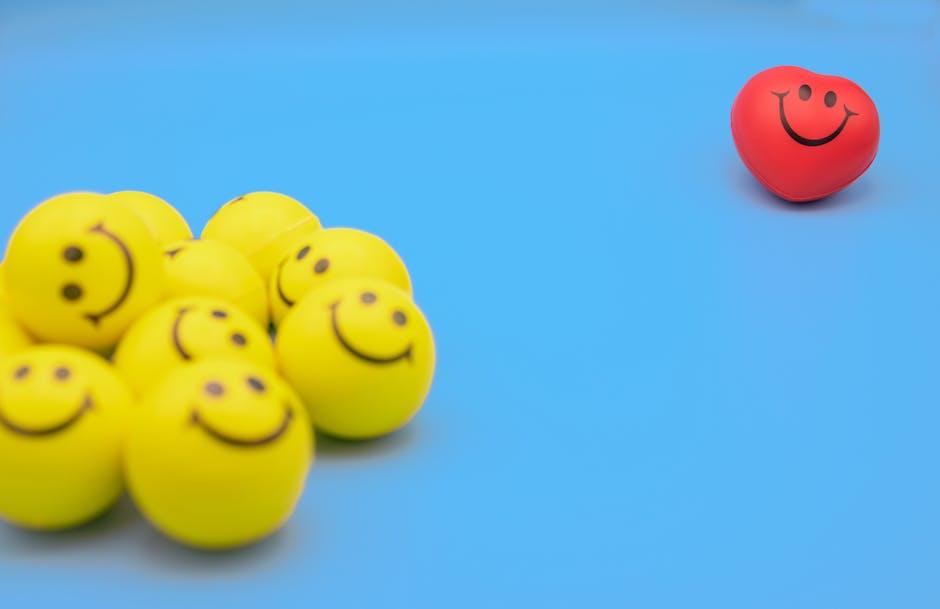
Have you ever stopped to think about why certain logos just seem to speak to you? Well, buckle up buttercup, because we’re about to dive into the murky waters of logo perception and how those sneaky little colors play a big ol’ role in how we feel about ’em. So grab a snack, sit back, and prepare to have your mind blown by the wild world of logo psychology. Let’s get colorful, baby! 🎨🌀🌈
The Power of Color in Logo Design
Colors play a crucial role in the world of logo design. They have the power to evoke emotions, convey messages, and leave a memorable impression. Let’s dive into the wacky world of colors and see just how they can elevate your logo game!
Just like a superhero needs their sidekick, a logo design needs the perfect color to make it shine. Whether you want to exude trust with blue, show off your creative flair with purple, or make a bold statement with red, choosing the right color can make all the difference. It’s like choosing the right outfit for a first date – you want to make a memorable impression!
But be warned, not all colors are created equal in the logo design world. Some may make your audience feel calm and collected, while others may have them running for the hills. It’s important to strike the right balance and choose colors that not only represent your brand but also resonate with your target audience.
So, the next time you’re brainstorming logo ideas, don’t just throw a bunch of colors together and hope for the best. Take the time to understand the psychology behind each hue, experiment with different combinations, and watch as your logo comes to life in full technicolor glory! Remember, with great color comes great responsibility!
Choosing the Right Color Palette for a Logo
When selecting a color palette for your logo, it’s important to consider the message you want to convey to your audience. Colors have a psychological impact on people, so make sure you choose wisely – unless your plan is to subconsciously drive away customers, in which case, go right ahead and pick that neon orange and pink combo.
Keep in mind that certain colors evoke specific emotions. For example, **blue** is often associated with trust and dependability, while **red** can signify passion or danger. So unless you’re starting a business selling fire extinguishers, maybe steer clear of too much red in your logo.
Another factor to consider when selecting colors for your logo is **contrast**. You want your logo to be eye-catching and easily recognizable, so make sure the colors you choose don’t blend together into a giant blob of indistinguishable mush. Unless, of course, your brand identity is… mushy.
Ultimately, the most important thing is to choose colors that reflect your brand identity and resonate with your target audience. Remember, your logo is often the first thing people see, so make sure it leaves a lasting impression – preferably a positive one, unless your plan is to be known as “that brand with the eye-searing logo color scheme”.

How Colors Elicit Emotional Responses in Viewers
Colors are like the emotional rollercoasters of the art world. They can make us feel happy, sad, angry, or even hungry (yes, I’m looking at you, McDonald’s red and yellow combo). Let’s delve into the wacky world of how colors manipulate our emotions like a puppet master pulling our heartstrings.
First up, we have red. This color is like the diva of emotions, demanding attention wherever it goes. It’s often associated with passion, love, and anger. In other words, it’s like that fiery friend who can’t help but stir up drama wherever they go. Red also has the power to increase our heart rate and appetite – no wonder it’s the go-to color for fast-food chains.
On the flip side, we have blue, the cool cucumber of the color wheel. This color is all about calmness, trust, and stability. It’s like that one friend who always has a soothing presence and never fails to keep you zen during stressful times. Blue is also known to lower heart rates and promote relaxation – the perfect color for a spa day at home.
And let’s not forget about yellow, the sunniest color of them all. Yellow is like a burst of happiness in color form. It’s associated with joy, energy, and optimism. It’s that friend who always knows how to brighten your day with a cheesy joke or a spontaneous dance party. Yellow is also known to stimulate the nervous system and create a sense of excitement – the perfect color for a fun-filled adventure.

Cultural Differences in Color Interpretation
Have you ever wondered why the color red symbolizes luck in China but danger in the Western world? It’s fascinating how different cultures interpret colors in various ways. Here are some quirky examples of :
- White: In many Western countries, white symbolizes purity and innocence. However, in some Asian cultures, white is associated with death and is worn at funerals.
- Green: While green is often linked to nature and growth in the West, it represents jealousy in some Latin American countries. So, next time you give someone a green thumbs up, make sure they know you’re not envious!
- Yellow: In Japan, yellow is associated with courage and wealth. But in Egypt, it signifies mourning. Imagine showing up to a funeral in a bright yellow outfit!
As you can see, colors can have vastly different meanings depending on where you are in the world. It’s always a good idea to research the cultural significance of colors before making any assumptions. Otherwise, you might accidentally offend someone with your choice of wardrobe or decorations!

Color Psychology and Logo Perception
When it comes to logo designs, color psychology plays a massive role in how we perceive a brand. Have you ever wondered why McDonald’s uses red and yellow in their logo? It’s not because they wanted to remind you of ketchup and mustard, but because red is known to stimulate hunger and yellow is associated with happiness and positivity. So next time you’re craving fries, blame it on the color scheme!
But not all colors have such straightforward associations. For example, blue is often used in logos to convey trustworthiness and reliability, which is why tech companies like Facebook and IBM opt for this hue. Meanwhile, green symbolizes growth and health, making it a popular choice for organic and eco-friendly brands like Whole Foods Market.
Of course, color perception can vary greatly from person to person. While some may find a purple logo to be luxurious and royal, others might simply associate it with the childhood character Barney. Similarly, a black and white logo may be seen as classic and elegant by some, but others might mistake it for a newspaper or the nearest GameStop.
visibility“>The Impact of Color Contrast on Logo Visibility
Ever tried spotting a logo from a distance, only to realize it’s blending into the background like a chameleon at a rainbow convention? That’s the magical world of color contrast at play!
Imagine a logo that’s as subtle as a stealth ninja in the shadows because its colors are playing a game of hide-and-seek with each other. It’s like trying to find a needle in a haystack, except the needle is dressed in camouflage!
**So, what’s the secret sauce for logo visibility?**
- High contrast colors that scream for attention like a toddler in a candy store
- Complementary colors that dance together in perfect harmony, like a well-choreographed ballet performance
Consider this: logos are like celebrities on a red carpet. They need to stand out, shine bright, and make a statement that says, “Look at me, I’m fabulous!” And that, my friends, is the power of color contrast in logo design.
Case Studies: Successful Logo Designs and Their Use of Color
Ever wondered why certain logos catch your eye and stick in your memory? Well, it’s not just because of their clever design – it’s also thanks to their strategic use of color! Let’s dive into some case studies of successful logo designs that have nailed their color choices.
- McDonald’s: Yellow and red – the colors of hunger and urgency. Who can resist the call of those golden arches when they’re lit up in bright, bold colors?
- Nike: Black and white – the epitome of sleekness and sophistication. The swoosh logo practically screams “just do it” in these classic colors.
But it’s not just about picking any old color combination – it’s about choosing the right colors to evoke the right emotions. Just imagine if McDonald’s used a calming blue instead of their vibrant yellow – would you still be loving it?
So next time you’re brainstorming your own logo design, take a page out of these successful brands’ books and think carefully about the colors you choose. After all, it’s not just about looking pretty – it’s about making an impact!
FAQs
Why do certain colors evoke specific emotions in people?
Well, it all goes back to our caveman days when we had to rely on our primal instincts for survival. Certain colors like red signaled danger (think angry mammoths), while green represented safety and abundance (hello delicious berries). Our brains are hardwired to associate colors with certain feelings and reactions.
Does the color of a logo really impact how consumers perceive a brand?
Absolutely! Just like how you judge a book by its cover, consumers make split-second decisions about a brand based on its logo color. Think of it as speed dating for logos - you gotta make a good first impression to seal the deal.
What colors should a business use to convey trustworthiness and reliability?
If you want to inspire trust in your customers, stick to classic colors like blue and white. Blue is like that reliable friend who always comes through, while white exudes cleanliness and purity. Together, they’re like the dynamic duo of trustworthiness.
Can using the wrong colors in a logo actually drive customers away?
Oh, for sure! If you’re a funeral home using hot pink in your logo, people might think you’re less about mourning and more about partying. It’s all about sending the right vibes to attract your target audience – unless you want to repel them like a magnet with the wrong colors.
How can a business determine the best colors for their logo?
It’s all about knowing your audience, baby! If you’re targeting hipster millennials, maybe go for some trendy colors like millennial pink or avocado green. But if your target market is old-school execs, stick to those traditional, trusty colors like black and gold. It’s all about playing the color game to win over your audience.
In conclusion, color me impressed!
Thanks for embarking on this chromatic journey with us as we explored how colors can make or break a logo’s impact. Remember, when it comes to logo design, the hue’s the limit! So don’t be blue – tweak those colors and paint your brand in the best light possible. Stay colorful, my friends!











